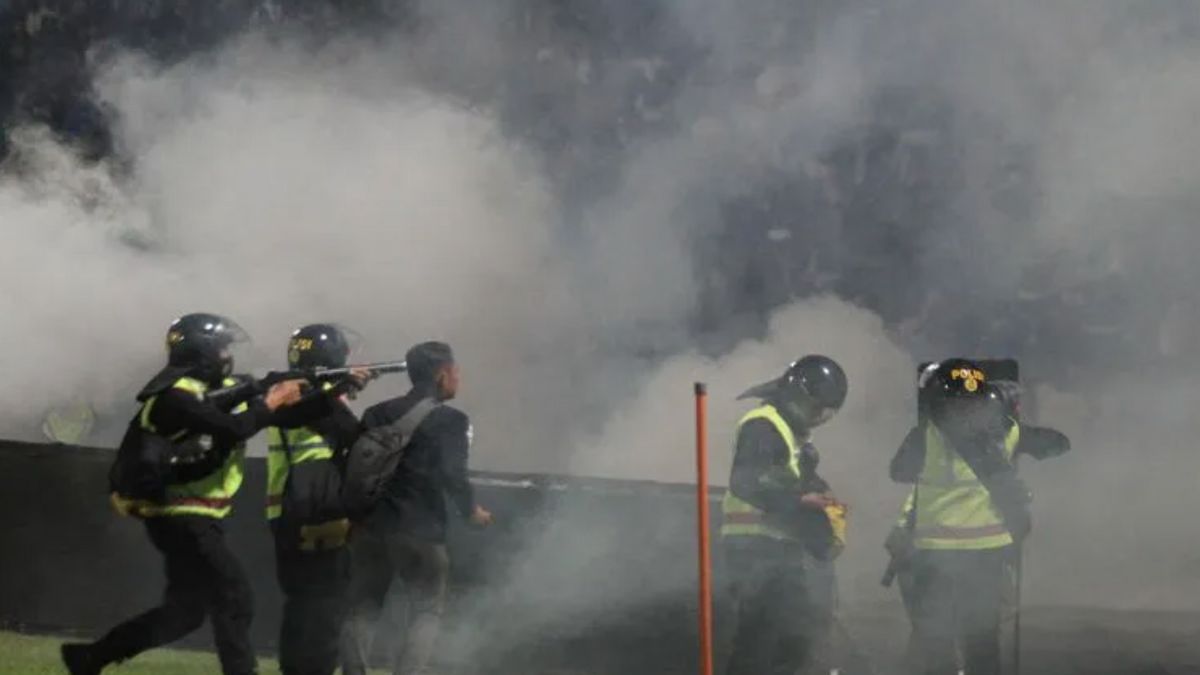JAKARTA - Lung Doctor of Persahabatan Hospital Feni Fitriani Taufik said tear gas could be the cause of death depending on the number of exposures and the condition of the victim.
“If it is accompanied by a large exposure, plus other conditions so that further damage to the lungs, it can be fatal. Even though it's actually not much, with the multiplication of effects, death may occur," she said in an online talkshow via Instagram at the Persahabatan Hospital, as reported by ANTARA, Wednesday, October 12.
Feni explained that tear gas is not just gas, but there is a mixture of solid chemicals and liquid chemicals that are irritating. Once tear gas is sprayed, the chemical can get into the eyes, skin, and respiratory tract causing burning, redness, runny eyes and nose, and runny nose.
The level of danger posed by tear gas, she continued, varied, ranging from mild to severe. The magnitude of the hazard depends on the amount of tear gas that hits the body and the duration of exposure to the chemical gas.
“If we compare it with the riots that were thrown in the open alarm, it's people who stay away so the contact can not linger. But if it's in a closed room, the risk of people being exposed will be longer and it will have an effect on our bodies that are exposed to the exposure," she said.
In addition, the physical condition of victims of tear gas exposure also affects the level of danger. There are certain groups that are referred to as tear gas vulnerable groups such as children whose airways and physical conditions are weaker with effects that will be more severe than young adults. Then people who have comorbidities related to respiratory disorders such as asthma and people who smoke.
"What happened yesterday (Kanjuruhan) apart from being unable to stay away because you couldn't leave the room, there was panic and jostling so that respiratory tract disorders increased. So the effect becomes more severe and we see the victims become bigger,” she said.
However, if exposure to tear gas lasts for a long time, it will cause more chemical particles to enter the body which can cause a severe inflammatory response in the respiratory tract.
Then there is swelling and constriction that causes a person to have difficulty inhaling and exhaling. If the disturbance continues to the lungs, it will interfere with the oxygen capture process.
SEE ALSO:
Feni said the best treatment to avoid the dangers of tear gas is to avoid exposure as soon as possible and wash your face, eyes, and nose as soon as possible to neutralize chemical exposure. The use of protective eyewear, masks, and long-sleeved clothing can also reduce the potential for chemical exposure from tear gas.
"If there are medical facilities, oxygen can be given or to the nearest health facility because panic makes people unable to objectively assess their condition," she said.
The English, Chinese, Japanese, Arabic, and French versions are automatically generated by the AI. So there may still be inaccuracies in translating, please always see Indonesian as our main language. (system supported by DigitalSiber.id)
















